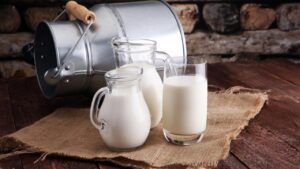
In Ukraine, in February 2025, farms of all categories produced 439 thousand tons of raw milk, which is 14 thousand tons less (-3%) compared to January 2025 and 24 thousand tons less (-5%) compared to February 2024, according to the Association of Milk Producers (AMP).
According to the report, in January-February 2025, the volume of milk yield in Ukraine amounted to 891 thousand tons, which is 32 thousand tons (-4%) less than in the previous year.
At the same time, the share of enterprises in the production of raw milk in February 2025 amounted to 55%, and households – 45%. Enterprises produced 239 thousand tons of raw milk in February 2025, which is 20 thousand tons less (-8%) compared to January 2025 and 4 thousand tons more (+2%) compared to February 2024.
In January-February 2025, dairy farms produced 499 thousand tons of raw milk, which is 21 thousand tons (+4%) more than in the previous year.
In private households, milk yield in February 2025 amounted to 200 thousand tons, which is 6 thousand tons more (+3%) than in January 2025 and 28 thousand tons less (-12%) than in February 2024. In January-February 2025, the private sector produced 393 thousand tons of raw milk, which is 53 thousand tons (-12%) less than in the previous year.
AVM analyst Giorgi Kukhaleishvili notes that in 2025, MTFs may refrain from increasing milk production in the face of declining demand for dairy products in the domestic market and falling purchase prices. Since dairy processing companies are not able to buy milk at adequate market prices, a further increase in milk yield could lead to a greater price collapse.
At the same time, the potential threat of the spread of foot-and-mouth disease, which has been reported in Hungary and Slovakia, poses a challenge to Ukraine’s dairy industry. An increase in culling of infected livestock could lead to a reduction in milk yield.
“There are prospects for some growth in demand for milk in Ukraine. Dairy processing companies are striving to promote the recovery of demand for dairy products from the population through discounts and promotional offers in retail chains. With the beginning of spring, the ice cream season begins, and the export of canned milk from Ukraine is also growing, which stimulates the receipt of additional volumes of raw milk for processing,” the industry association summarized.
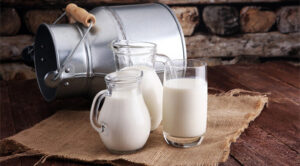
Agricultural enterprises increased milk production by 3.4% in September 2024 compared to the same period last year, Infagro, an industry news and analysis agency, reported citing data from the State Statistics Committee.
Analysts predict that in 2024, milk production by this category of producers will increase by 4% to 2.9 million tons.
“The total milk production by all categories for the first nine months of the year is 5.6 million tons, which is 2.9% lower than in the same period of 2023. The volume of milk production in the category of agricultural enterprises in the first nine months is 5.1% higher than in the same period last year (2.2 million tons),” the experts explained.
As of October 1, the number of cows in Ukraine was estimated at 1.24 million, which is 6.6% lower than on the same date last year. At the same time, there are 0.38 million heads in agricultural enterprises (-1.8%), Infagro summarized.
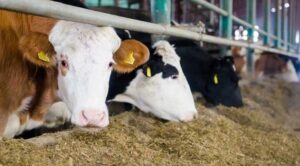
In 2023, Astarta agricultural holding increased the number of cattle at its three dairy farms by 10% year-on-year to 26 thousand heads, of which 47% were dairy herds, the company said in its annual report on Wednesday evening.
According to the document, cattle milk yields increased by 9% compared to the same period last year and reached 25.8 kg/day. This, together with a 3% increase in the number of cows in the herd compared to last year, led to a 12% increase in milk production compared to the same period last year and amounted to 115 thousand tons.
In addition, in 2023, the agricultural holding increased sales of raw milk by 13% year-on-year to 111 thousand tons, of which 96% was of high quality (94% a year earlier).
Astarta sold all of its milk domestically. The agricultural holding supplies top quality raw milk to Ukraine’s leading large dairy processors, including Lustdorf, Yagotynsky Butter Plant and others.
The average selling price of raw milk increased by 10% year-on-year to UAH 14 thousand. In euros, the selling price decreased by 4% year-on-year to 352 EUR/t in 2023 amid inflation and exchange rate changes.
According to the report, Astarta operates 33 dairy farms in three regions of Ukraine and specializes in the production of raw milk for further sale to processing companies.
The agricultural holding has a calf breeding complex to meet its own needs, which was opened in 2012 and produces about 5,000 heads of highly productive calves annually.
As reported, in 2023, Astarta reduced its net profit by 5.0% to EUR 61.9 million, and its EBITDA decreased by 6.1% to EUR 145.77 million. Last year, the agricultural holding’s revenue increased by 21.3% to EUR 618.93 million, gross profit by 7.8% to EUR 223.59 million, while operating profit decreased by 12.2% to EUR 95.78 million.
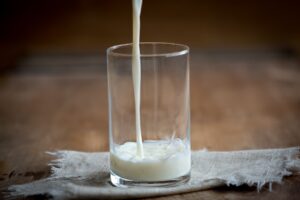
In January-October 2023, raw milk production by farms of all categories decreased by 6% to 6277.4 thousand tons compared to the same period last year, while industrial enterprises increased production and households reduced it, according to the Association of Milk Producers (AMP) based on the analysis of data from the State Statistics Service.
According to the report, in October 2023, milk yields in Ukraine amounted to 610.50 thousand tons, which is 3% less than in September this year and 6% less than in October 2022. At the same time, since the beginning of 2023, the share of enterprises in the production of raw milk has amounted to 37%, and households – 63%.
According to the AMP, in January-October 2023, enterprises increased milk production by 7% to 2341.4 thousand tons. In October this year, industrial milk producers increased their production to 228.9 thousand tons, which is 2% more than in September and 7% more than in October last year.
At the same time, households reduced milk production by 14% to 3936 thousand tons in 10 months of 2023 compared to the same period last year. In October 2023, the volume of milk yields in the population amounted to 381.6 thousand tons, which is 7% less than in September and 13% less than in October 2022.
According to Giorgi Kukhaleishvili, AMP analyst, the overall decline in raw milk production in Ukraine is mainly due to a drop in milk yields in households that have suffered the most from the consequences of Russia’s full-scale invasion.
“Despite these challenges, agricultural enterprises have managed to adapt to wartime conditions and increase raw milk production in the territories controlled by Ukraine. It should be noted that it is mainly extra-virgin milk produced by the enterprises that is processed. Ukraine is gradually switching to food processing of milk exclusively to this type of raw material,” the expert stated.
In January-October 2023, an increase in raw milk production was observed in farms of all categories in Kyiv (+4.3%), Cherkasy (+3%), Khmelnytsky (+2.1%), Chernihiv (+2%), Rivne (+0.7%), Poltava (+1.3%), and Kharkiv (+3.1%) regions.
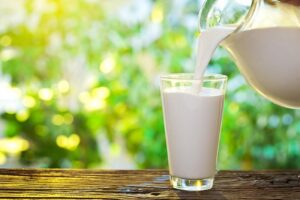
By the end of this year, raw milk production in Ukraine will total roughly 7.5 mln t, which is 13.9% less than last year, of which 4.9 mln t will be produced by households (-15% by 2021), and 2.6 mln t (-5%) – by specialized enterprises.
Total supply of milk and dairy products in 2022 will be 7.9 million tons, said deputy director of livestock and breeding department of the Ministry of Agrarian Policy and Food of Ukraine Elena Dadus in her column on the website of the industry analytical agency “Infagro”.
According to her predictions, this year the export of milk and dairy products from Ukraine will amount to 510 thousand tons, and import – 415 thousand tons.
In addition, according to State Statistics Committee of Ukraine, consumer price index of milk in January-November 2022 increased by 18.4% as compared to the same period of 2021.
It is specified that the vast majority of milk is produced in regions where there are no military operations – 94.7%. At the same time, during the year its production increased in some regions – Rivne, Ternopil, Khmelnytskyi and Cherkasy. This shows that there is a demand for dairy products, and that the vacuum created by the destruction of enterprises in the South and East of Ukraine is being filled by enterprises from safer parts of the country.
“This year, 2022, has been a challenge and a test for the dairy industry. The important thing is that finally everyone has found and filled their niche, competing and along with it not destroying the opponent. When supply chains were destroyed, both raw materials and products, small local trading networks came to the rescue, and small and medium enterprises for primary processing of products began to appear rapidly, and, thus, the supply of products to local local markets was provided”, – specified the representative of the Ministry of Agrarian Policy in her column.
Subsequently, when export routes were established and new European markets opened for Ukraine, there was a reorientation of individual enterprises to European markets, and due to the favorable global environment there was an opportunity to export Ukrainian products at a more attractive price.
“The main task is to keep the balance between the margins of business and meeting the needs of the population, because the market capacity is often conditioned by the purchasing power of consumers of products,” Dadus stated the results of the year for the industry.
As reported with reference to the data of the Association of Milk Producers (AMP), milk production in Ukraine for 10 months of 2022 decreased by 12.4% – to 6.56 million tons at the background of the reduction of livestock and productivity of cows in the frontline zones and areas with active fighting.
At the same time, the supply of basic fat milk for processing in Ukraine decreased by 13.5% to 1.99 million tonnes. In addition, the role of the industrial sector in food processing continues to strengthen: 1.7 million tons, or 85.7% of raw milk received for processing from dairy farms, while the share of “homemade” milk fell to 14.6%.
Proceeds from exports of dairy products from Ukraine in September reached a record high since the beginning of the year – $35.9 million, which is 9.2% more than in August 2022, and 2.45 times more than in September 2021.
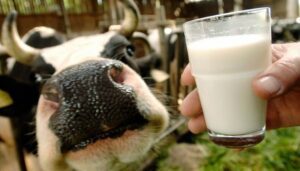
Milk production in 2022 due to the military invasion of the Russian Federation will be reduced by 13.3-15.9%, to 7.33-7.56 million tons from 8.73 million in 2021, the depth of the crisis in the industry will be determined by further development hostilities in the country and their geography, the profile association “Union of Dairy Enterprises of Ukraine” (SMPU) reported.
“It is unlikely that with the current development of the military situation, the decline in the production of raw milk will exceed 17%. Such a decrease will not lead to a critical reduction in the supply of dairy products on the domestic market, since the share of consumption reduction due to the migration factor is 18-20%,” – indicated in the forecast on the website of the organization on Friday.
She recalled that since the beginning of the Russian invasion, more than 4 million citizens of Ukraine have left the country, and about 10 million have moved to safer regions. This significantly reduced the demand for dairy products in the country, especially given the almost complete halt in its exports. Thus, due to the departure of some citizens, the average per capita consumption in Ukraine in 2022 will increase by 8% – from 212 kg in 2021 to 229 kg this year.
“For the dairy industry, the first days were also a shock: several international companies closed their milk processing plants, the established logistics schemes for the delivery of raw milk were violated, agricultural enterprises had nowhere to deliver raw milk. Farmers changed routes on the go, milk was delivered where the situation permitted, many raw materials were simply given away for free,” the SMPU clarifies.
At the same time, the enterprises that continued to work changed the range of their products to the most in demand in the conditions of martial law: butter, cheese, milk powder, long-term storage milk. In addition, such enterprises massively donated their products to feed the Ukrainian army, humanitarian supplies and other charitable purposes.
The SMPU clarified that the assessment of the prospects for milk production in Ukraine is becoming more difficult not only because of the uncertainty of the capabilities of farms and processing plants in the territories of active hostilities with Russian occupiers. Important factors that negatively affect milk production are problems with logistics (sales, delivery of feed, veterinary drugs, etc.) and a reduction in the number of cows directly in the combat zone.
“It should be noted that in the regions that are under temporary occupation (Kherson, Mykolaiv regions, the southern part of Zaporozhye) – the volume of milk production was not significant before, which was taken into account in the forecast calculations made by the SMPU,” the organization clarified in the message.
As SMPU previously reported, after the recession of the economy caused by the Russian invasion, 60-65% of milk processing enterprises have already resumed work, which, even in the conditions of hostilities, are able to provide the domestic market, taking into account the migration of part of the population abroad.